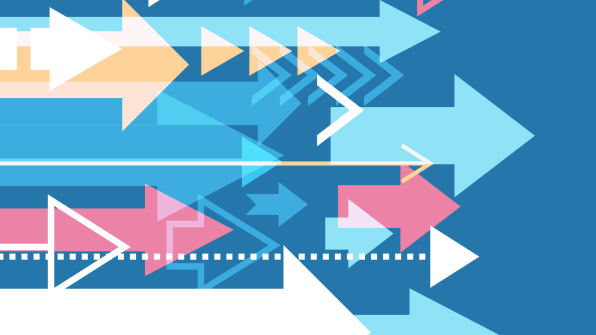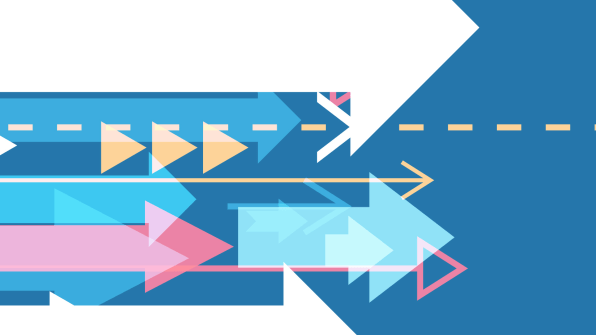Want To Employ Behavioral Science For Good? Here’s A Helpful Collection Of Ideas
For social entrepreneurs and nonprofits seeking to make a dent in the world’s most vexing problems, figuring when and how to use behavioral science can be its own conundrum. While the field is all about creating simple “nudges”—subtle design cues (sometimes cascades of them) in products, interventions and even basic paperwork that encourage others to make socially good decisions in their own best interest, it’s not very user friendly for cause groups that might want to implement some of the techniques.
When the work is done right, more people, say, gain access to financial services that help them automatically save money, court summonses designed to ensure they stay out of jail, and academic encouragement that can boost graduation rates. But the industry as a whole is decentralized and jargon-y. It’s hard to translate the mostly academic-speak into useful guidelines for how others in the field might use these ideas.

Recognizing that, three of the sector’s top nonprofit and educational players–Ideas42, Innovations for Poverty Action, and the Center for Health Incentives & Behavioral Economics at the University of Pennsylvania–have joined forces to create a meta-nudge: The Behavioral Evidence Hub, an online public resource to share industry work more widely, and in a way that everyone can understand.
“This came about because we started to see certain behavioral innovations that would come up time and again and they were pretty simple to implement,” says Piyush Tantia the co-executive director at Ideas42. “What we’ve done is brought out more of the details of each product design, so that somebody somewhere else can copy it.”
Of course, the behaviors some groups may seek to modify can be pretty culturally specific. And the approach that aid groups take to do that may depend on how they’re set up to operate. So B-Hub is searchable by issue (criminal justice, environment, social inclusion, etc.), geography (both region or country-specific), and problem type (things like “navigating a process” or “sustaining behaviors and forming habits”). It’s essentially a decision tree toward various solutions.
For instance, a University of Pennsylvania study about the power of plan-ahead prompts like postcards to increase the number of employees getting flu shots, shows the actual variations that a Midwest utility company mailed out. (Same thing for this text-based medication reminder study by IPA that improved the rate of malaria vaccinations in sub-Saharan Africa.) An Ideas42 effort to keep at-risk freshman enrolled at San Francisco State shows the actual student testimonial video that kicked things off, as well as all the surveys, supportive texts and emails that were used. It’s all laid out with catchy charts and graphs, plus there’s contact info for the researchers involved.

Groups who visit the site can also compare their current practices against behaviorally optimized checklists to tweak current letter and email writing campaigns, how they might set up and operate in the field, or how complex multi-step processes actually get executed.
Ideas42, IPA, and CHIBE have also tapped other major field contributors like the Behavioral Insights Group at the Harvard Kennedy School, the Organisation for Economic Co-operation and Development, and the U.K.’s Financial Conduct Authority to chip in studies. The repository currently has over 60 evidence-driven examples of what’s worked, covering things like how to improve college retention, encourage saving, and improve the likelihood of people consistently taking medication or being vaccinated.
Crucially, the database doesn’t just link to what’s been previously published elsewhere—everything has been painstakingly reformatted to shares costs, challenges, impact, and results, and real-life examples of what the each “nudge” actually looked like.
So far though, B-Hub has been visited by people in over 90 countries. The site actively solicits other behavioral science practitioners to submit their own studies for review and, perhaps, inclusion.
“This is not a static site. It’s a growing tool for people,” adds Manasee Desai, vice president at Ideas42, who notes that her group is already analyzing how people are engaging and considering ways to boost interactions. (One obvious missing feature? A discussion forum.) “It is an innovation, which means there’s no way we got it right the first time,” adds Tantia.
B-Hub collects real-life examples of successful nudges and breaks them down by costs, challenges, impact, and results so that anyone might implement them.
For social entrepreneurs and nonprofits seeking to make a dent in the world’s most vexing problems, figuring when and how to use behavioral science can be its own conundrum. While the field is all about creating simple “nudges”—subtle design cues (sometimes cascades of them) in products, interventions and even basic paperwork that encourage others to make socially good decisions in their own best interest, it’s not very user friendly for cause groups that might want to implement some of the techniques.
Fast Company , Read Full Story
(26)








